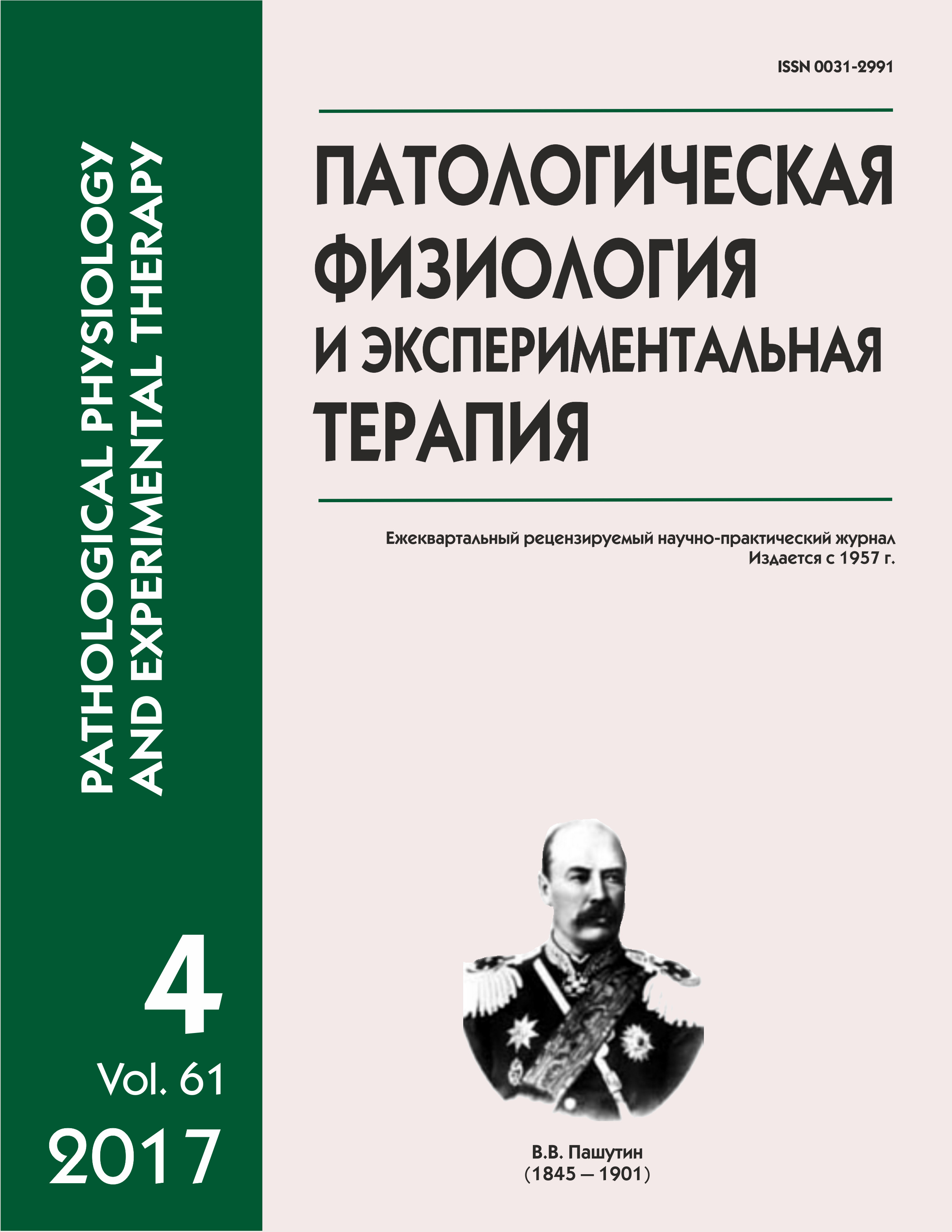Evaluating the patency of PTFE grafts in reconstruction of great veins (experimental study)
DOI:
https://doi.org/10.25557/IGPP.2017.4.8521Keywords:
venous reconstruction, porous polytetrafluoroethylene, patency of prostheses.Abstract
Aim. To study patency of synthetic, porous polytetrafluoroethylene (PTFE) conduits in reconstruction of great veins and to justify their use in clinical practice. Methods. The study was conducted on 70 New Zealand male rabbits weighing 3.0-3.5 kg. Infrarenal linear prosthetic reconstruction of posterior vena cava was performed in 40 rabbits. Infrarenal linear prosthetic reconstruction of abdominal aorta was performed in 30 rabbits (control group). All surgical procedures were conducted in aseptic conditions under intramuscular anesthesia. Porous PTFE conduits with 4 mm internal diameter and 20 mm length (7th generation, 2010; ZAO NPK Ecoflon, Russia) were used for prostheses of aorta and posterior vena cava. All anastomoses were made of atraumatic 7/0-8/0 ligature using microsurgical instruments. No anticoagulant therapy was used throughout the experimental period. During the study, conduit patency was controlled by ultrasound Doppler monitoring of blood flow velocity distal and proximal to the conduit and direct, invasive BP measurements during the surgery and at 3, 10, 30, 90, 180, and 270 days of surgery. At the end of experiment, the conduit was removed from the animal together with adjacent structures. The Mann-Whitney U-test was used for comparison of BP and blood flow velocity distal and proximal to the conduit. Differences were considered significant at p ?0.05. Results. Significant differences between values of linear blood flow velocity and BP distal and proximal to the conduit were absent in the entire follow up period. The patency of porous PTFE conduits was similar in both arterial and venous positions. No conduit thrombosis or hemodynamically significant stenosis were observed in arterial or venous positions in the entire follow up period. Conclusion. The patency of PTFE conduits in the venous position is similar to and not different from the arterial position. The obtained experimental data support the use of synthetic PTFE conduits for reconstruction of great veins in clinical practice. Conclusion. The polytetrafluoroethylene conduits patency of in venous position is similar and does not differ from arterial position. Obtained experimental data gives the opportunity for synthetic polytetrafluoroethylene conduits appliance for main vein reconstruction in clinical practice.Downloads
Published
2017-12-18
Issue
Section
Original research
How to Cite
[1]
2017. Evaluating the patency of PTFE grafts in reconstruction of great veins (experimental study). Patologicheskaya Fiziologiya i Eksperimental’naya Terapiya (Pathological physiology and experimental therapy). 61, 4 (Dec. 2017), 38–43. DOI:https://doi.org/10.25557/IGPP.2017.4.8521.






